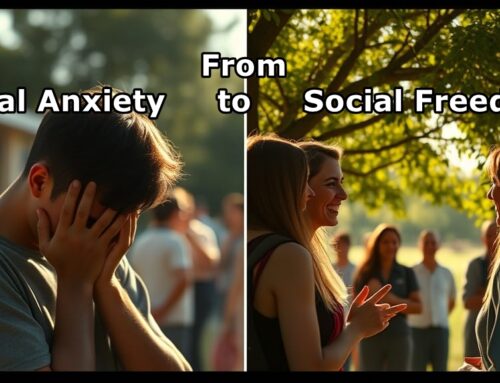The Metaphor of Mind: How Your Environment Shapes Mental Clarity
Download the Worksheet Here
There’s a powerful idea gaining traction among coaches, therapists, and high-performing individuals: your external environment is a direct reflection of your internal world. More than just a tidy space, your surroundings act as a mirror for your thoughts, habits, and emotional state. And the good news? By intentionally shaping your environment, you can cultivate greater mental clarity, discipline, and peace.
This concept—often called “the metaphor of mind”—suggests that organizing your physical space isn’t just about aesthetics or cleanliness. It’s a form of mental hygiene. When you clear clutter from your desk, wipe down a countertop, or assign a proper home to your keys, you’re not just cleaning—you’re reorganizing your mind.
Why Your Space Matters
Consider this: you might dress sharply for a meeting, speak confidently, and present yourself as someone who “has it together.” But what if your home tells a different story? Piles of unwashed laundry, dishes in the sink, or chaos in every corner can silently undermine your sense of control—even if no one else sees it. Over time, that disarray leaks into your self-perception and how others unconsciously perceive you.
This isn’t about perfection or wealth. A small, simple space can radiate order and intention, while a large, expensive home can feel chaotic if it lacks coherence. The key question isn’t “Is it clean?” but “Does this space reflect the mindset I want to embody?”
 Two Essential Principles: Metaphor and Enjoyment
Two Essential Principles: Metaphor and Enjoyment
Two qualities make this practice sustainable: metaphor and enjoyment.
The metaphor reframes cleaning as an act of self-care. Every time you tidy a drawer or wipe a surface, you’re symbolically clearing mental fog. You’re telling yourself: I value order. I respect my future self. I am capable of control.
But discipline alone fades without enjoyment. The trick is to find small, immediate satisfaction in the act itself. Keep a spray bottle and cloth handy in your kitchen. When you notice a spill or smudge, clean it right away—not because you “have to,” but because it feels good. That tiny act becomes a micro-win, reinforcing your sense of agency. You don’t need hours or energy—just a minute and a shift in perspective.
And remember: you don’t have to do it perfectly. Start with one shelf. One corner. One habit. Do it well enough, feel the shift, and let that momentum carry you forward.
Creativity and Compartmentalization
This doesn’t mean everyone should live like a minimalist. Creative minds often thrive in rich, visually stimulating spaces. Think of an artist’s studio—messy, colorful, overflowing with ideas. That chaos may reflect a vibrant inner world.
But even creatives benefit from compartmentalization. One famous artist, Andy Warhol, known for his bold, chaotic public work, kept his private apartment as a serene, traditional English drawing room—quiet, orderly, and deeply personal. This separation allowed him to step out of creative intensity and recharge in calm.
Similarly, your space should tell the story of who you are. A therapist might fill their office with calming textures and meaningful symbols. A writer might surround themselves with books and inspiration boards. The goal isn’t uniformity—it’s alignment with your values and purpose.
Practical Wisdom for Helping Professionals
For those in coaching, therapy, or healing work, environment becomes even more critical. A well-designed space can deepen client trust and create a container for transformation.
Imagine a consultation room that feels like a “healing temple”—soft lighting, drapes, symbolic decor (stars, moons, calming colors)—yet the practitioner wears clean, professional attire. This balance signals both warmth and competence. The space invites vulnerability; the attire conveys reliability. Together, they say: You are safe here, and I know what I’m doing.
Dress and decor should reflect the professional you aspire to be—not a costume, but a conscious expression of your role.
You’re Responsible for Your Own Space
A common obstacle? Sharing space with someone who doesn’t prioritize order. The solution isn’t to nag or wait for alignment—it’s to take ownership. Clean for your own peace of mind. Organize because it helps you feel grounded. When you stop depending on others to meet your standards, you reclaim your agency—and often inspire change without saying a word.
When to Use Coaching vs. Direct Intervention
This approach is especially powerful for people feeling overwhelmed, anxious, or stuck. Instead of diving straight into deep emotional work, start with the environment. Ask: Where can you create a small sense of order? Making your bed, clearing your desk, or organizing your phone photos can restore a feeling of control.
For specific habits—like quitting smoking or nail-biting—direct techniques (like hypnosis) may be more effective. But for broader life chaos, begin with the metaphor of mind. Use coaching to help clients see how outer order supports inner calm, then reinforce that link through deeper work.
A Daily Practice, Not a One-Time Fix
This isn’t a weekend project. It’s a daily practice—like brushing your teeth or making your bed. Admiral William McRaven famously said that making your bed each morning gives you one small win to build on, even on the worst days. The same applies here.
Each intentional act—hanging up your coat, filing a document, wiping a counter—becomes a quiet affirmation: I am in charge of my world.
Start Small, Think Big
You don’t need a new house, a windfall, or a total overhaul. Look around right now. What’s one thing you can adjust to better reflect the mind you want to cultivate? A clear surface? A labeled drawer? A calming object on your desk?
Do that one thing. Notice how it feels. Then do another.
In a world of constant noise and distraction, curating your environment may be the simplest—and most profound—act of self-leadership you can practice. Because when your outer world aligns with your inner intentions, you don’t just get your “stuff” together. You get yourself together.


 Two Essential Principles: Metaphor and Enjoyment
Two Essential Principles: Metaphor and Enjoyment




Leave A Comment
You must be logged in to post a comment.